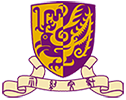MATH6211A - Topics in Applied Mathematics I - 2016/17
Announcement
- The presentation 1 will be held on Dec. 1, 9:30-12:30
- Presentation 2: Dec. 2, 1:30-5:30, LT4
General Information
Lecturer
-
I-Liang Chern
- Office: SC 334
- Tel: 39435137
- Email:
Time and Venue
- Lecture: 9:30-12:15 LSB 222
Course Description
Since the breakthrough from the two papers [Donoho 2006], [Candes- Romberg-Tao 2006], Compressive Sensing (CS) has been becoming a very hot research topic in the fields of statistics, computer science, electrical engineering, applied mathematics, and many others. Its philosophy is the follows: many data that we are interested are indeed sparse, if they are properly represented. Therefore, it is possible to measure them “compressively.” So, the issues of compressive sensing are: how to represent them in sparse way, how to measure them efficiently (compressed sensing), and how to recover them from compressed measurements? The new emerging area, Data Science, is closely related to this research area, which is so-called “finding a needle in a forest.” Its mathematical theory is still under developing. Its applications include machine learning, medical imaging, computational biology, geophysical data analysis, compressive radar, remote sensing, ..., etc. See the webpage “compressive sensing resources” (http://http://dsp.rice.edu/cs) for more informations. The goal of this course is to provide basic theory and a corresponding numerical algorithms. This course will consist of three parts: (1) mathematical foundation of compressive sens- ing, (2) numerical optimization algorithms, (3) applications. For the mathematical foundation, I will select several chapters from the book: Simon Foucart and Holger Rauhut, “A Mathemat- ical Introduction to Compressive Sensing,” Birkhauser, 2013. For the numerical optimization algorithms, I will use Vandenberghe’s slides at UCLA. For applications, I will ask students to reported on some application articles, either chosen by students or suggested by me.
Theory • An invitation to Compressive Sensing • Basic Algorithms: Optimization algorithms, Greedy algorithms, Thresholding algorithms • Basic Pursuit, Mutual Incoherence and Restricted Isometry Property • Basic Probability Theory • Sparse Recovery with Random Matrices.
Numerical Optimization Algorithms • Gradient descent method • Proximal gradient method, Nestrorov acceleration method • Primal-dual methods • Argumented Lagrangian methods, ADMM
Textbooks
- • SimonFoucartandHolgerRauhut,AMathematicalIntroductiontoCompressiveSensing, Birkhauser, 2013. http://human-robot.sysu.edu.cn/ebook/preprint093.pdf.
- • Vandenberghe, Optimization Methods for Large-Scale Systems http://www.seas.ucla.edu/ ̃vandenbe/ee236c.html.
Lecture Notes
Honesty in Academic Work
The Chinese University of Hong Kong places very high importance on honesty in academic work submitted by students, and adopts a policy of zero tolerance on cheating and plagiarism. Any related offence will lead to disciplinary action including termination of studies at the University. Although cases of cheating or plagiarism are rare at the University, everyone should make himself / herself familiar with the content of the following website:
http://www.cuhk.edu.hk/policy/academichonesty/and thereby help avoid any practice that would not be acceptable.
Last updated: November 24, 2016 15:19:08



